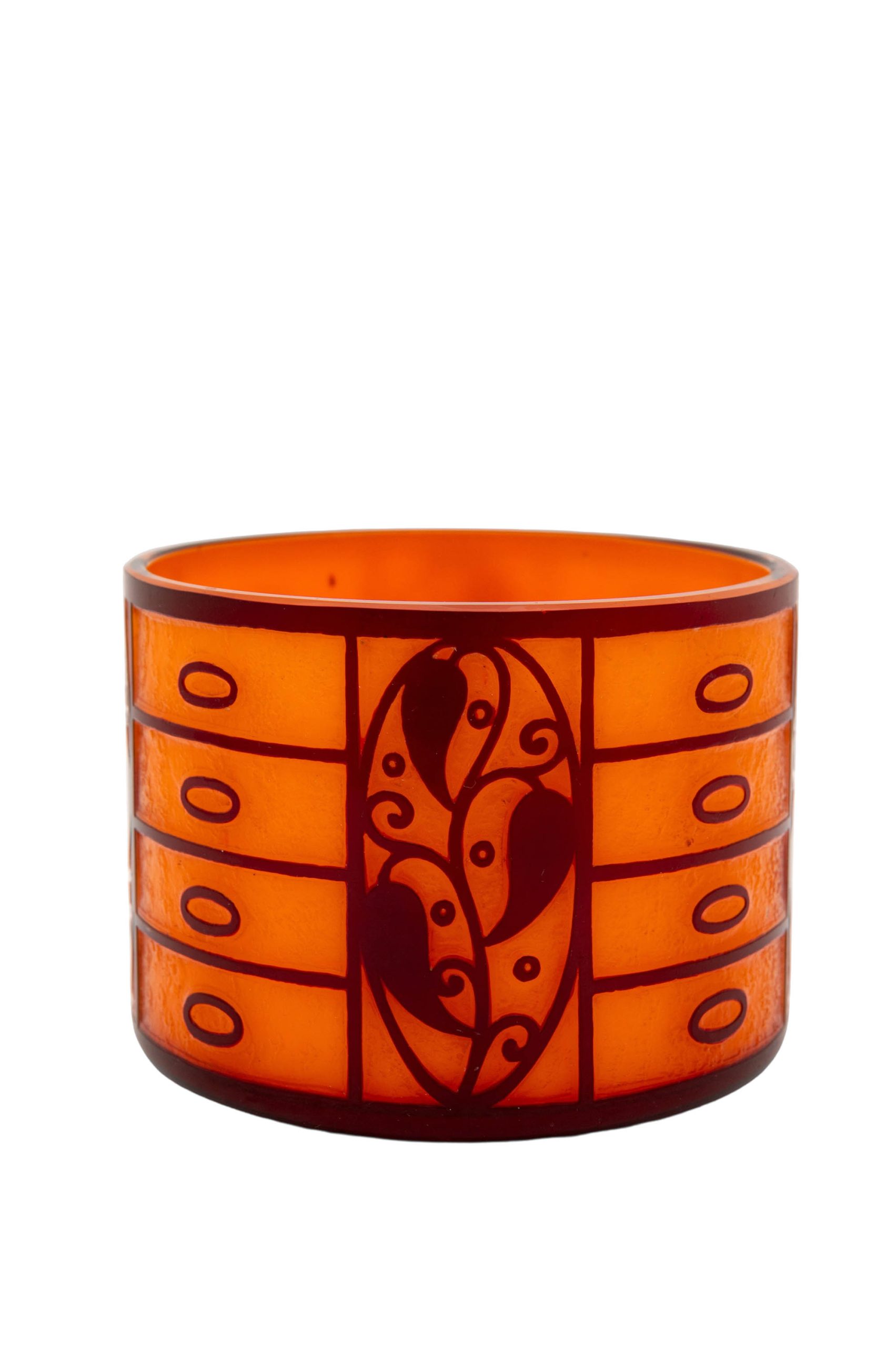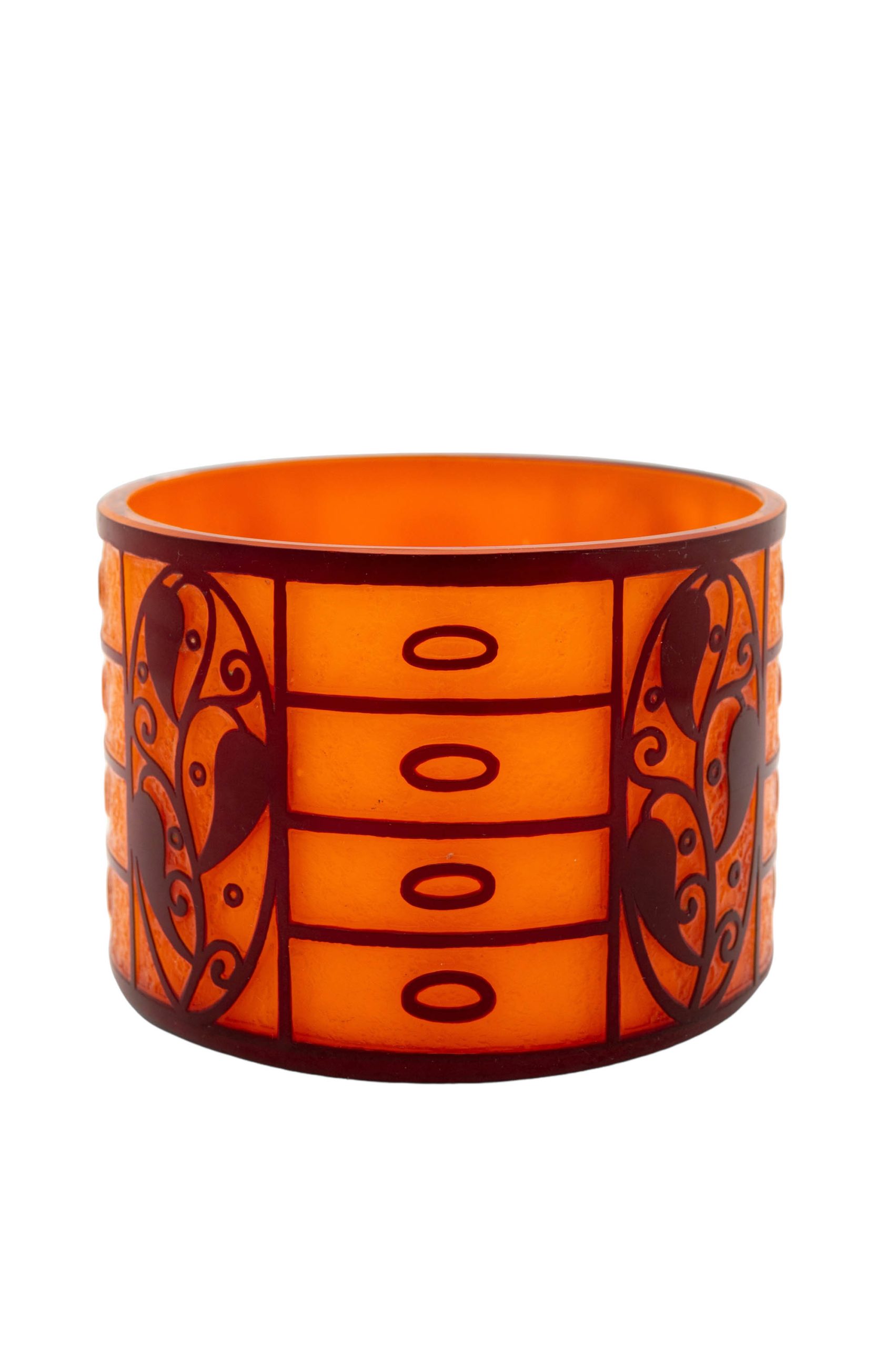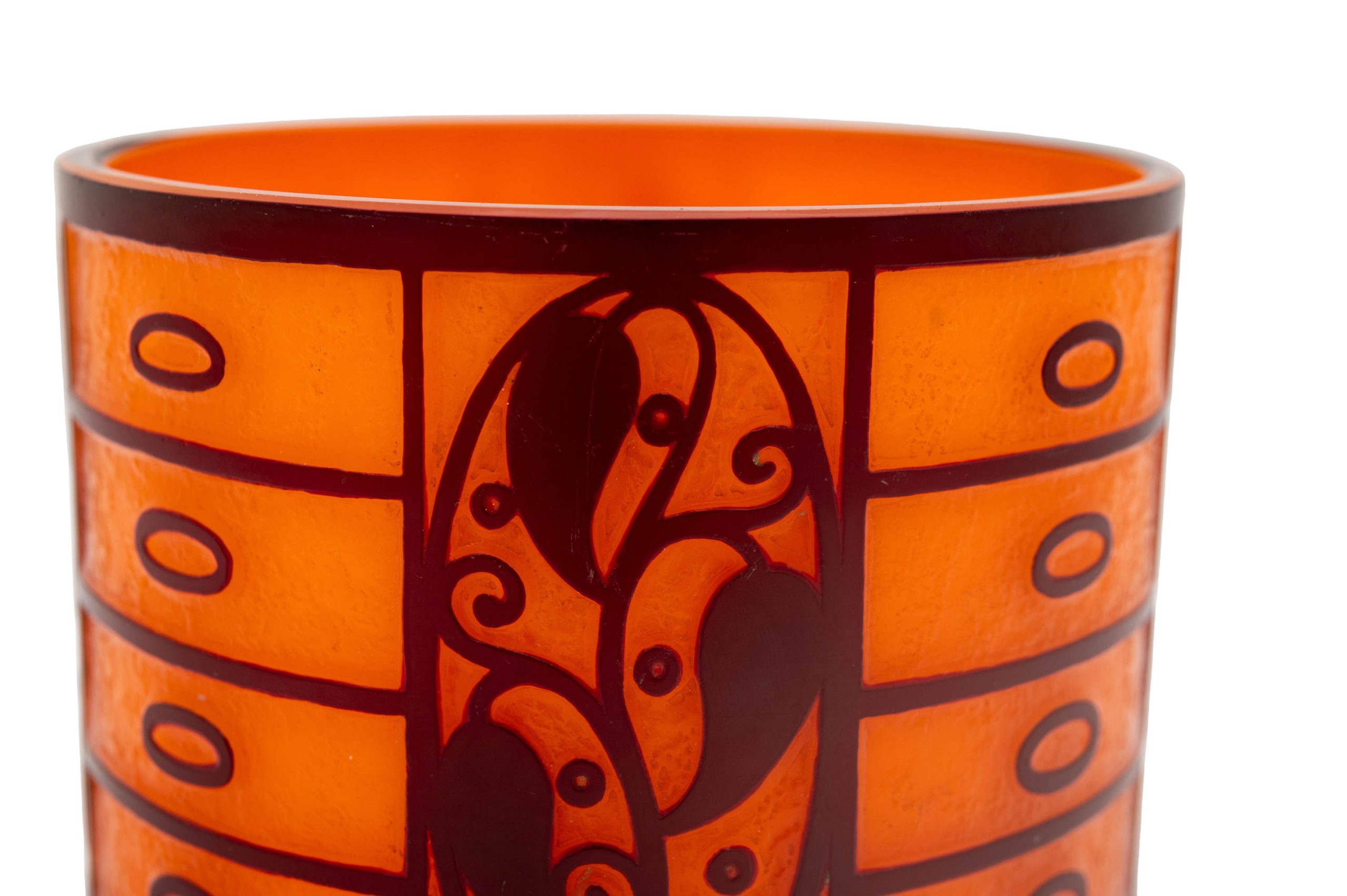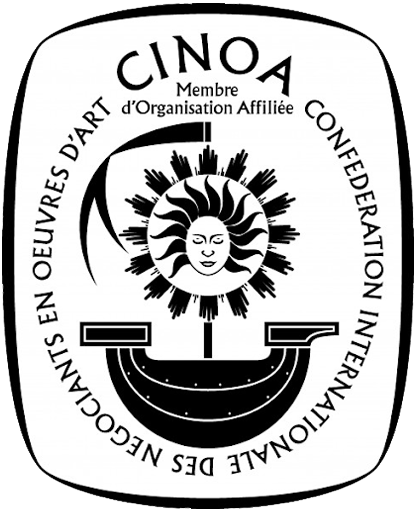Vase Josef Hoffmann Loetz Orange Opal außen Schwarz 1911 or 1914
Vase, Orange Opal Aussen Schwarz decoration, Josef Hoffmann, Johann Loetz Witwe, one of only two pieces, executed either 1911 or 1914
Bib.: A. Adlerova, E. Ploil, H. Ricke, T. Vlcek (ed.), Loetz – Böhmisches Glas 1880-1940, vol. I, Werkmonographie, Prestel publ., Munich 1989, p. 271 (similar vase in the museum Bergreichenstein); A. Adlerova, E. Ploil, H. Ricke, T. Vlcek (ed.), Loetz – Böhmisches Glas 1880-1940, vol. II, paper pattern catalogue, Prestel, Munich 1989, paper pattern 8031, p. 218.; Jitka Lnenickova, Loetz/Series II. Paper Patterns for Glass from 1900 to 1914, Museum Sumavy, Susice 2011, no. II-8031, p. 755. Waltraud Neuwirth, Loetz Austria 1905-1918. Glass, self-published Dr. Waltraud Neuwirth, Vienna 1986, depiction 303, p. 323.
Description
In the early 1910s, Josef Hoffmann had reached the peak of his creative powers. He was very well connected in the art scene of the time and carried out commissions for both private individuals and the state. The etched glass vases that he had made by the Loetz glass manufactory for the winter exhibition at the Austrian Museum of Art and Industry in 1911 are certainly among his most important decorative arts designs from this period.
While some designs of this period were so popular that they were produced in large quantities, there were also models that Loetz could only produce in very small numbers for representative purposes due to the costly manufacturing process.
Our vase in “orange opal with black” belongs to the second category. It was only produced twice in this color combination: once in 1911 and once in 1914, making this possibly the last existing example of the design. This vase is the most important glass object by Josef Hoffmann that we have ever been able to offer in our gallery.
ARTIST
Josef Hoffmann (Brtnice 1870 – 1956 Vienna), co-founder of the Viennese Secession and of the Wiener Werkstätte, was an extremely productive and versatile architect and designer. Throughout his career he experimented with various forms, techniques and materials. In his designs, he was striving for a strong reduction of the form to the essential and was a pioneer of geometric Jugendstil. This is how his characteristic geometric style was established. The scope of his designs ranges from buildings and entire interiors, following the concept of the “Gesamtkunstwerk” (total work of art), all the way to small details of everyday life. One of his most significant works is the Palais Stoclet in Brussels, a Gesamtkunstwerk which he executed for a wealthy entrepreneur between 1905 and 1911 in collaboration with, among others, Gustav Klimt and Koloman Moser.
EXECUTION
The history of Johann Loetz Witwe begins in 1836 when a certain H. Johann Bapt. Eisner established a glass manufacture in Klostermühle (Bohemia). At that time mainly utilitarian glass was produced. In 1851, the manufacture was acquired by Dr. Franz Gerstner and his wife Susanne - the widow of the glass manufacturer Johann Lötz. Shortly thereafter, Gerstner transferred his half to Susanne Lötz, who registered her company in 1858 under the name "Johann Lötz Witwe" (the international spelling "Loetz" established itself later on). In 1879, Susanne Lötz transferred the manufactory to her daughter and her daughter's husband, a certain Maximilian knight von Spaun. In 1897, von Spaun probably discovered Louis Comfort Tiffany glasses at an exhibition in Bohemia. An encounter, which must have left a lasting impression on the entrepreneur: a short time later, the first glass objects with "Phenomen Genre" decorations appeared. Von Spaun hired the Munich-born painter Franz Hofstötter to provide artistic impulses in the workshop ahead of the Paris World Exhibition 1900. This cooperation was an absolute success for Maximilian knight von Spaun. His glassworks Johann Loetz Witwe was awarded the Grand Prix in Paris in 1900 and thus found itself virtually overnight on the level of traditional companies such as Louis Comfort Tiffany as well as Émile Gallé and Daum Frères from Nancy. In parallel, Loetz began to collaborate with artists from Vienna. Especially the designers of the Wiener Werkstätte and their students deserve to be mentioned at this point: Koloman Moser, Josef Hoffmann, Robert Holubetz, Hubert Gessner and Hans Bolek, as well as many others, contributed groundbreaking designs to Loetz's production line for years. Exports were made worldwide: In addition to exhibitions in St. Louis and Milan, the company also showed their products in Vienna, Prague and Leipzig. Buyers were found in London, Paris, Berlin, and even as far away as India. However, after the successes around 1900, customer interest waned. The glassworks tried to react by employing more and more artists from Vienna. In 1909, Adolf Beckert, a young and dynamic artistic director was hired, and in 1913, additional representatives were commissioned to sell the glass. The beginning of the First World War put an end to all efforts. The prices for raw materials and transporting goods soared, and qualified workers were hard to come by. While the 1910s could still be managed financially, the 1920s did not bring any significant relief for Johann Loetz Witwe. Production continued for a few more years - supported by noble donors from the circle of friends of the Spaun family - at a constant loss, but in 1939 the glassworks in Klostermühle had to cease production due to insolvency. In the 1980s, the glass objects of the Loetz manufactory eventually attracted the attention of international collections. Objects from the time of the Paris World Exhibition 1900, vases with the decorative designs of Franz Hofstötter as well as designs by artists from the circle of the Wiener Werkstätte saw their prices increase significantly. With the discovery of the glassworks’ paper patterns, research in this field intensified. Today, items from this traditional workshop can be found in the world's most famous museums. In the last 20 years, glass objects from Klostermühle have once again experienced a strong price increase - currently, there seems to be no end in sight. Thanks to a global network of experts, there is a lively exchange of information. New decorative variations are constantly being discovered and given their original names. Glasses by Johann Loetz Witwe are more sought-after today than ever before, and an ever-growing circle of collectors is succumbing to the fascination for these fantastic works of art.

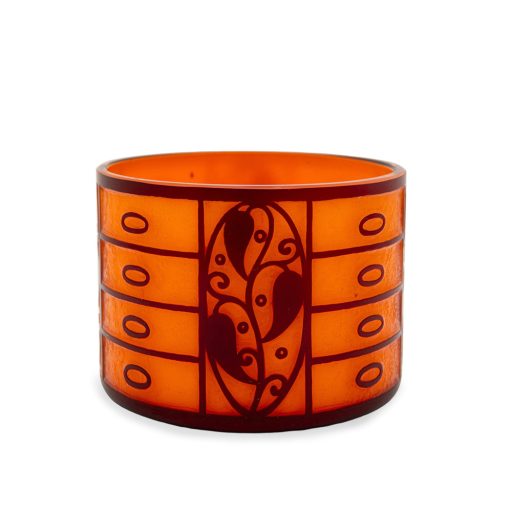
By sending the inquiry form, you accept the use of your data for this inquiry. Privacy Policy
1010 Wien
Monday to Friday: 11:00 a.m. – 7:00 p.m.
Saturday: 11:00 a.m. – 4:00 p.m.
and by appointment
Phone: +43 1 513 32 69
E-Mail: info@floriankolhammer.com



